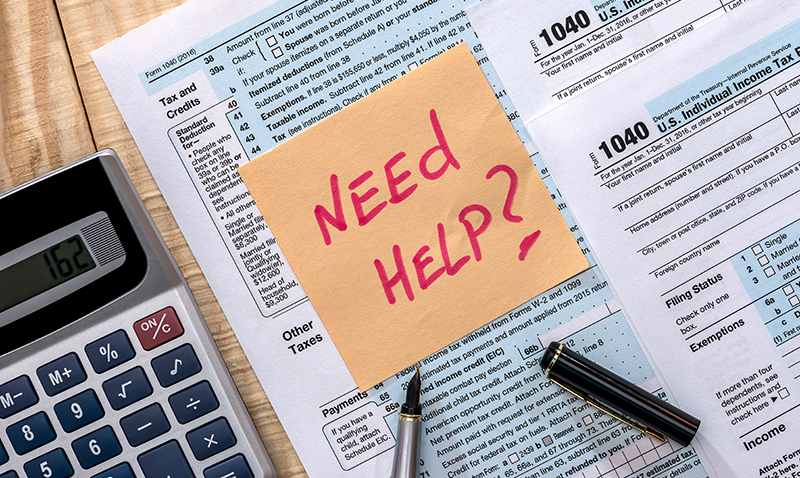Can the IRS take your Social Security Check for Back Taxes?
October, 20 2021 by Jean Lee Scherkey, EA
Surely Social Security retirement payments cannot be garnished out of my bank account by the IRS if I owe back taxes, right? I mean, it's Social Security.
 We all know the rules surrounding debt collection are complex, and it is easy for these rules to get as tangled as a pair of crafty raccoons left to their own devices in a yarn factory. Taxpayers who are behind on their federal taxes may be surprised to know that their Social Security benefits are ripe for the picking by the IRS. You may be shaking your head in disbelief and saying to yourself - wait a minute. I know Social Security benefits are off-limits to creditors. Well, that is partially correct. Generally, Social Security benefits are out of the reach of many private debt creditors. They cannot be garnished to pay for past-due medical bills, delinquent credit card payments, and car loans. This protection is especially true when Social Security benefit recipients have their payments directly deposited into their bank account or their prepaid Direct Express® Debit MasterCard®. When a bank receives a garnishment order from a creditor, they usually are not required to examine the consumer's account to verify if any deposits by check were Social Security benefit payments. If someone has outstanding consumer debt and is receiving Social Security benefits, they may want to consider requesting their payments be direct deposited into their bank account or deposited to a qualified prepaid card if they are currently receiving paper checks. (If you are experiencing outstanding consumer debt, please consult with a credit counselor regarding the payment and settlement options available, as every person's situation is unique.)
We all know the rules surrounding debt collection are complex, and it is easy for these rules to get as tangled as a pair of crafty raccoons left to their own devices in a yarn factory. Taxpayers who are behind on their federal taxes may be surprised to know that their Social Security benefits are ripe for the picking by the IRS. You may be shaking your head in disbelief and saying to yourself - wait a minute. I know Social Security benefits are off-limits to creditors. Well, that is partially correct. Generally, Social Security benefits are out of the reach of many private debt creditors. They cannot be garnished to pay for past-due medical bills, delinquent credit card payments, and car loans. This protection is especially true when Social Security benefit recipients have their payments directly deposited into their bank account or their prepaid Direct Express® Debit MasterCard®. When a bank receives a garnishment order from a creditor, they usually are not required to examine the consumer's account to verify if any deposits by check were Social Security benefit payments. If someone has outstanding consumer debt and is receiving Social Security benefits, they may want to consider requesting their payments be direct deposited into their bank account or deposited to a qualified prepaid card if they are currently receiving paper checks. (If you are experiencing outstanding consumer debt, please consult with a credit counselor regarding the payment and settlement options available, as every person's situation is unique.)
The IRS has the authority to garnish certain Social Security benefits to settle specific federal government debts. These debts include back child and spousal support, defaulted federal student loans, and federal income taxes that are past due. There are several Social Security benefit programs, and not all of them are within reach of the taxman. Supplemental Security Income (SSI) is expressly protected and may not be garnished for private or federal debts, including back federal income taxes. One of the only reasons SSI benefits may be garnished would be to pay back the Social Security Administration if benefits were previously overpaid to the recipient. SSI is a needs-based disability program that the Social Security Administration administers. Recipients of SSI benefits are permanently and totally disabled and did not have a qualifying work history that included paying into Social Security.
Those receiving Federal Old Age, Survivors, and Disability Insurance (OASDI) benefits may be out of luck, as the IRS may garnish these payments if federal income taxes are left unpaid. This is true even if the benefit payments are directly deposited into the recipient's bank account or a prepaid Direct Express® Debit MasterCard®.
So, how does a Social Security levy work? Is it a "one and done" kind of levy, or can the IRS keep coming back for more until the tax debt is paid in full? Can the IRS take the entire monthly payment and run?
The IRS has two types of levies: "One-time" and "Continuous." When a one-time levy is issued, the IRS seizes the lesser of the amount owed or what is in the account. If the seized amount does not satisfy the balance due, the IRS will need to issue another one-time levy to seize any future deposits. A common type of one-time levy is when the IRS seizes the lesser of the tax due or balance of a taxpayer's state income tax refund. When issuing a continuous levy, the IRS will seize a specific amount from a taxpayer's wages, retirement income, or regularly paid commissions on a regular basis. The seized amount is based on a formula and will stay in effect until the IRS releases it, the debt is paid in full, or the collection statute expires. Social Security benefit levies are a part of the IRS Federal Payments Levy Program (FPLP). The IRS has the authority to issue a continuous levy on Social Security OASDI payments until the back taxes that are due are paid in full, or other arrangements have been made for paying off the debt. Under most circumstances, the maximum the IRS may take from a taxpayer's qualified Social Security payment to pay off past due federal taxes is 15% of the total monthly payment.
Before the IRS can issue a levy, three actions must take place.
- The IRS must issue a Notice and Demand for Payment.
- The IRS must issue a Notice of Intent to Levy. The notice must be sent at least 30 calendar days before the levy action. If it has been over 180 days since the issuance of the notice and the levy action has not taken place, the IRS must send another Notice of Intent to Levy to start the levy action again.
- The IRS must issue a Notice to a Collection Due Process (CDP) Hearing.
A CDP hearing is a meeting that takes place with an IRS Settlement Officer (SO) or other IRS representative that has not worked on the taxpayer's case beforehand. The IRS's goal is to reach a payment agreement with the taxpayer as an alternative to having to seize some of the taxpayer’s Social Security benefits. A taxpayer only has a 30-day window to submit a CDP hearing request. It is essential to file a timely CDP request, as the request will automatically suspend the impending levy action until the hearing takes place and an agreement is made. If an agreement cannot be reached, the taxpayer will have 30 days to file a petition to Tax Court. As long as the CDP and, if needed, the Tax Court petition are filed timely, the IRS will continue to suspend any levy action.
Just like a good, crisp apple can refresh the senses, resolving an impending levy action before the first garnishment takes place can put the pep back in a taxpayer's step. The IRS has an orchard brimming with various payment options, from different varieties of installment agreements, payment extensions, innocent spouse relief, and offers in compromise. What if you are on a tight budget and your Social Security benefits is the only income between you and couch surfing? For some folks, a 15% monthly garnishment of their Social Security benefits is not feasible, and neither is an alternative payment plan such as an installment agreement. When the IRS determines that a levy or other payment arrangement will cause a severe economic hardship and impact a taxpayer's ability to pay their basic living expenses, the IRS will place the taxpayer's account into Currently Not Collectible or CNC status. When a taxpayer is in CNC status, the IRS will suspend all payment requirements until the taxpayer's financial situation improves or the statute of limitations on collecting the tax due expires. Generally, the IRS has 10 years from the date a tax is assessed to collect the balance due. The date a federal tax debt is no longer enforceable because the statute of limitations has expired is called the Collection Statute Expiration Date or CSED.
If your federal tax debt is a little long in the tooth and you are coming close to the 10-year collection statute expiration date, don't take a bite of that shiny apple of tax debt freedom just yet. If a levy is put in place before the collection statute expiration date, the levy may continue after the collection statute of expiration date has passed. Yep, you read that right. The IRS contends that because a taxpayer had a fixed and determinable right to future Social Security benefit payments when the levy was put in place, the IRS may continue levy procedures until the tax is paid in full. All the more reason to resolve a levy action as soon as possible.
Even if your Social Security benefits are already being garnished, you still have options. The IRS would much rather resolve the tax debt and set up a payment plan than continue levy action. If you owe the IRS back taxes and your Social Security benefits are about to be or are already being levied, we are here for you! When amidst the anxiety of owing back taxes and dealing with a levy action simultaneously, deciding the best course of action can be like trying to bob for an apple in a barrel of caramel sauce. The tax professionals at TaxAudit's Tax Debt Relief Services understand how difficult navigating the IRS can be. Our staff is here to help you overcome the fear and uncertainty and develop a resolution that works for you. After all, gaining financial freedom from tax debt is as American as apple pie!





